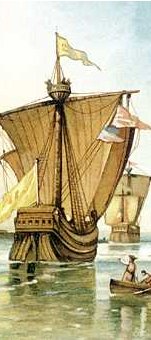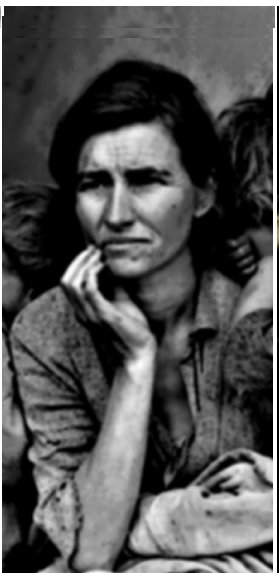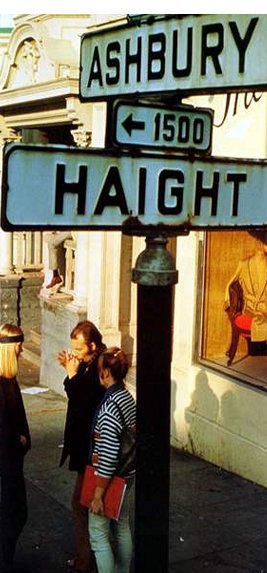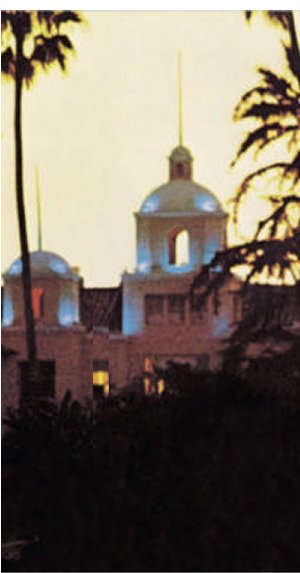Dust Bowl Migrations Joycelyn Nguyen
James N. Gregory
received a Ph.D. at the University of California, Berkeley, in 1983 and a B.A.
at the University of California, Santa Barbara in 1795. He is an Associate Professor of
History at the University of California, Berkeley.
Gregory is a director of the Seattle Civil Rights at the University of Washington. His work focused on labor, radicalism,
migration, and civil rights. He studies the history of Civil Rights activism
among the Seattle area.
James N. Gregory¡¦s American
Exodus: The Dust Bowl Migration and Okie Culture depicts the Californian
life during the Dust Bowl Migration. Migrant Mother, an award winning photo
taken by Dorothea Lange during this time, portrays a woman with an infant in
her lap along with two children on the side. This image provided Americans a
reality check pertaining to the difficulties during the Depression era in California.
People migrating from Oklahoma, Texas,
Arkansas, and Missouri
were known as the Dust Bowl refugees or ¡§Okies and Arkies¡¨ due to the location
from where they migrated from.1 The southwestern states formed the
bulk of the migrants who came to California.
The migration to California was
the first factor that contributed to the Depression Era failure. Californian society
was greatly affected by the various migrant groups and their cultural
experiences. The hostile native population and limited economic opportunities
were major factors in the Okie¡¦s experience in California
during the migration process in the year 1930. Following the 1930s, the Okies
soon adopted the Southwestern culture very quickly. Various outlooks on
different religious perspectives contributed to the popularity of what is now
known today as country music. In his book, Gregory attempts to focus on the
interactions between the migrants and the natives in California,
which later evolved the nation¡¦s diversity. The Okies that migrated to California
during 1939-1989 will always be remembered due to their contributions to
cultural customs and beliefs.
Oklahoma,
Texas, Arkansas,
and Missouri were the four states
that were part of the American heartland. With the contributions the migrants
brought with them, allowed California
to develop into a well prosperous state. Oklahoma
and Texas had factors that allowed
the area to have a sense of being surrounded by cattles. Some included the
attachment to their Western heritage in addition to the prosperous oil
industry. With new modernization in the agriculture field, it created an
outflow of people using the land and increasing the farm population which
ultimately replaced the mules and limited family labor involving farming units,
and machines. Many farmers sold their businesses in order to be able to move to
Los Angeles or Long
Beach. During the mid-1920s, the San
Joaquin Valley was
the most publicized destination for migrants during the Dust Bowl Migration.
After 1934, economic patterns began to change the non-agricultural economy
causing towns and cities to suffer. Ten percent of the Southwestern workers
were considered unemployed. Movies were marketed to Southwesterners in the
hopes of appealing to their dreams. Developing transportation led to a jump in
the volume of newcomers. Los Angeles
and the San Joaquin Valley
both provided various opportunities to the migrants. In 1935, the San Joaquin
Central Valley attracted more than 70,000 migrants to the changing social
lifestyles of the cities due to the complex metropolitan landscape, which
ultimately attracted many migrants to encounter few problems. Known as the area
of industrialized agriculture with special crops, the San
Joaquin Valley
provided many job openings in the oil and construction industries. ¡§Little Oklahomas¡¨
were migrant concentrations of the Southwesterners who bought property.2
These concentrations allowed the migrants from Oklahoma
to make decisions and determine their own future. The standard way of living of
these individuals fell due to the poverty of the Southwesterners who stayed in California.
Various interstate migrations
became a major concern when the economy began to crash. During the years
1935-1940, 61 percent of the interstate migrants came from four Southwestern
states who were willing to work extra hard due to the harsh summer conditions.
This ultimately drove most residential workers out of the food-processing
industry. Upton Sinclair¡¦s plan to End Poverty In California (EPIC)
promised a state-financed system of farms and factories, taxing the wealthy and
providing pensions for the elderly.3 This campaign was proposed by
the Democratic Party during Roosevelt¡¦s presidency. In
1941, the court case Edwards v. California
issued a decision resolving California¡¦s
migration debate. It resolved the legal confusion of the landmarks during the
migration. This decision started the trend for other states to start developing
a court system to help solve problems throughout their community. The Okies
were described as lazy workers who lived like hogs. Those who were foreigners
to the state of California were
referred to as Protestant Americans or the American natives. A majority of the
migrants from the southwest were sharecroppers and white trash. The rural
south-westerners who settled in California
were California¡¦s first white
trash since they were all ignorant and filthy. The Southerners dealt with a
self-conscious modernism that created a reputation by establishing the nation¡¦s
leading cultural figures as well as political-religious contests. Newcomers
arrived as dirt poor citizens and worked in the cotton fields in cheap
clothing. Teachers and social workers in the area noticed that illiterate
parents were forcing their kids to work rather than get an education. Both
groups of people considered migration a political and economic threat to
society. The lack of opportunity in rural parts of Oklahoma
initiated settlements in the San Joaquin
Valley during the late 1930s. One
distinctive feature of an Okie was the strong emotional ties to places they
left behind. The various migration locations throughout California
were determined based on their metropolitan settlers. Social acceptance
throughout the San Joaquin Valley
created a misfortune for migration which measured in number of Southwesterners.
Upward mobility was unpredictable due to the instability of farming and lower
socio-economic levels of society were encouraged to reform culturally.
Disengagement was the first line of defense for the poor Southwesterners who
gained a sense of social isolation and benefit from the valley. Attending
school meant no room for misunderstanding by Californian society. School
activities emphasized on vocabulary, grammar, and the correction of accents.
The young adolescents learned that their parents¡¦ way of life was inferior.
Poverty and self-esteem were two cultural factors that affected the number of
children who attended school.
Patterns of alienation encouraged
various cultural adaptations to occur during the 1940s. Subculture meant the
social formation of a distinctive set of norms and values that offered a sense
of identity for social interaction.4 Emphasizing the values and customs
related to poverty allowed the migrants to feel a sense of belonging. The Okie
subculture derived its elements from the outlooks, habits, and institutions of
the common people. By discovering a common understanding of various institutions
and working out new and unique reputations in society, men and woman were able
to socialize among themselves to establish a sense of identity. By fighting for
their rights, Protestants were able to preserve the Republic¡¦s ethnicity and
religious integrity. Ultimately, the Okie population increased among camps
throughout California.
Persistence and determination defined good character in the migrants. The
support of toughness and courage was shown through boxing and wrestling.
Celebrating the combat skills was part of the Okie history. Two social classes,
producers and parasites, were found and formed the central bearings in a
neo-populist perspective. This neo-populist perspective provided a change to
the century in terms of anti-communism, racism, as well as the toughness code.
Financial conspiracies were responsible for any type of economic crisis. The
United Cannery, Agricultural, Packing, and Allied Workers of America (UCAPAWA)
was one of the programs that was initiated by Congress. It led to a dramatic
drop in farm employment and tried to organize the migrants¡¦ roles as farm
workers and relief recipients. The working class culture emphasized the issues
of self-reliance, family autonomy, and the rank of the individual. UCAPAWA
faced impossible and unsolvable public relations problems with the California
agriculture system that affected all the market conditions in the farm-labor
union made up of the Okies. Nativism and racism were new ideas that were taking
shape in California. The middle
class was affected by the racial and ethnic tensions. Due to the harsh problems
faced by the UCAPAWA, the Okies tried to regain their identity back by
developing a military installation in 1945. From this campaign, former farmers
did not receive any sympathy for working under California
employers. This campaign program altered the Democratic Party in California
and its natives.
Moral and religious crusades
affected the family life of individuals throughout California.
In 1930, it was very difficult to maintain church involvement, despite the
development of the first Baptist church. This church was located in Shafter,
where the congregation was unfriendly and very intimidating. Methodism brought
the Dust Bowl Migration and the independent migrants as well as the fundamental
Baptist church closer together. Several social factors posed major problems
throughout the churches, like making working class Southwesterners feel
unwelcome because of their low position in society.5 The three
tenets of Protestantism were revivalism, pietism, and liberalism. The main
religious churches were formed and defined as the migration-magnet. Those who
migrated later became attached to the religious structure and beliefs. The act
of conversion required a desire for a profound religious commitment. The
Christian life promised immediate dividends of self-worth. The
Methodist-sponsored community was one of the methods preachers used to
influence their followers. Playing country music was used to celebrate the
success of industries and the close relationships that developed among people.
Music helped pass subcultures across generations with its themes portrayed
through the lyrics. The best selling country song of 1969, Okie from Muskogee,
portrayed a cult figure of a Southwestern heritage. The diffusion of country music was an
instrument that established a cultural sensation. From the dispersion of
country music, individuals were captivated by the tune and lyrics, which soon
allowed more migrants to come and settle in the state of California.
A silent majority sprang to the defense of God through country music and hard
work. All the migrants recovered a balance of dignity and pride. The Okie
subculture retained its imagination and group identity. The Dust Bowl Migration
showed the ways in which America
transformed through a populist movement.
Gregory depicts the Southwestern
migrants¡¦ hope for a better life in California.
In the early decades of the twentieth century, the California
agriculture expanded greatly with farms worth about $3 billion. This ultimately
sparked the spread of irrigation developing the era of factories in the fields.
The Dust Bowl Migration was a tragedy in the sense of the white Americans. The
city that grew the most was Los Angeles,
due to the farmers working in the San Joaquin
Valley. Seeing the prosperity from
working in the cotton fields, every migrant hoped to rent the new and open
land. Various migrations from the states of Oklahoma,
Texas, Arkansas
and Missouri caused conflicts
with the political ways making the conservatives uncomfortable.6 Thousands of new voters supported the new
welfare schemes as well as the anti-migration fervor. Migrants held the balance
of power among society through out the San Joaquin
Valley counties. Social acceptance
in areas was greatly affected by the patterns of the metropolitan settlers.
Linking the success of farm labor unions to the migrants¡¦ future, the Dust Bowl
migrants learned much about the standards of life in California.
regory writes about one regional
culture versus another and how they adapted and learned from one another. The
Okies, a group of migrants from Oklahoma,
created an image for themselves, applying their own values and outlooks on California.
The top reason most people migrated to California
was to search for work and a better lifestyle for their family. Various
regional cultures developed in California
throughout the San Joaquin Valley.
Over the last half-century, lifestyles that were developed helped spark a
breakthrough in the cultural heritages of the people. Evangelical Protestantism
dominated the religion during this time. This part of the Okie population had a
fierce attachment that brought the Southwesterners closer together.7
This religion was derived from a universal regional heritage in the South.
Evangelical Protestantism and country music were two factors that were
essential to the cultural identity in California.
As the state¡¦s largest Protestant denomination, the Southern Baptists
maintained the Southwestern culture and identity. Country music provided California
with a medium for the Southwestern culture. Due to their popularity, many
professional musicians incorporated the songs into Hollywood
productions.
A history professor at California
State University of Fullerton, Jackson K. Putman finds Gregory¡¦s analysis of
this migration phenomenon to be very convincing. Gregory analyzes the Okie and
his impact pertaining to the Californian society.8 Jackson
doubts that Gregory dealt enough with the Okies¡¦ suffering and their social and
economical problems. Focusing the subculture that was developed in the San
Joaquin Valley, he
wrote about the major and minor issues pertaining to this area in California.
Analyzing migration throughout the San Joaquin
Valley, Gregory concludes that
southern Baptists failed to organize and set up a way of life for incoming
migrants.
This book by James N. Gregory
portrays the positive aspects of the Okies¡¦ migration, in which they adapted
their own culture to California.
During the Depression Era, the Okies were known as the Dust Bowl migrants who
had become the modest winners in various territories.9 Their cultural contributions
garnered various responses from Californian residents. The impact of the Okie
culture allowed Americans to realize what our nation once was. Focusing on the
prejudice and hostility that the migrants faced in the 1930s impacted
Californian society today. Throughout the book, the vivid description of the
land in California during the
Great Depression allows the reader to be quickly captivated.
The Dust Bowl Migration occurring
in California did not affect the
events happening in the Eastern United States. The
people from Oklahoma, Texas,
Arkansas, and Missouri
defined the character of migration. With 550,000 Southwesterners migrating to California
during the 1920s and 1930s, the people populated the city of Los
Angeles and the Central Valley
quickly. Throughout California,
the distinctive subculture of the Okies was dominated by the rural collar
whites, which originated from the outlooks and habits of the southwestern plain
folks. In the year 1930, the process of cultural adaptation focused on the Okie
subculture. Not until the 1940s did the obvious monuments like churches and
country music slowly dominated the Californian society. Celebrating one aspect
of the Californian community was accomplished through country music.10 The messages portrayed through the music
allowed the generations to progress with influences from the music. Music
allowed people to express their opinions about various topics through songs and
hymns.
Due to the integration of a large new population of white
southwesterners part of the Californian society, the Dust Bowl Migration had a
heavy impact on California and on
America as a
whole. The variety of common
religions throughout California
had its origin and demography in the migration roots. With various military
manufacturing, big cities in the North like Detroit
attracted thousands of people. Racial diversity among the whites and blacks
began to equalize the geography in America
prior to World War I. The migration
of the Okies out of the South to the West created uniformity among the blacks
and whites in all places throughout California.11 Religious and
rowdy pieces created the family aspects of life during this time.
Overall, the state of California
was greatly influenced by the migration of the people from the Southwestern
states Texas, Arkansas,
Oklahoma, and Missouri.
Adapting to the new culture of the Okies settling in the San
Joaquin Valleys
created a religious background. The Evangelical Protestants, during the 1930s,
allowed citizens to believing in perfection and its manifestation on baptism.12
Emphasizing the act of conversion allowed a person to decide if they wanted to
be religiously committed and connected with their community. Increasing the
religious practices among the migrant communities allowed individuals to
express their feelings to a higher power without being judged by anyone. The
Okie culture contributions will always be a part of California¡¦s
history and should be well-respected by every citizen living in California.
1. Gregory, James N. American Exodus The Dust Bowl Migration
and Okie Culture in California. New
York: Oxford
University Press, 1989. xiv
2. Gregory, James N. 70
3. Gregory, James N. 90
4. Gregory, James N. 139
5. Gregory, James N. 194
6. Gregory, James N. 208
7. Gregory, James N. 232
8. Putman, Jackson K. ¡§Book Review.¡¨ Journal of San
Diego History Volume 36. 1990 1
June 2008
<http://www.sandiegohistory.org/journal/90fall/exodus.htm>
9. Gregory, James N. 84.
10. Gregory, James N. 239
11. Gregory, James N. 187
12. Gregory, James N. 197










